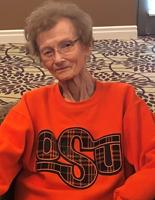The 2021 Payne County Extension Pasture Tour will be held on Thursday, June 10 from 7:30 a.m. to 3:30 p.m. The stops will include OSU Research Range, Western Skies, and the Cimarron Valley Research Station-Perkins. Breakfast and lunch will be provided.
You must RSVP by Friday, June 7th to the Payne County Extension Office. If you have any additional questions, please contact the Payne County Extension Office at 405-747-8320. We hope you can join and look forward to seeing everyone at the 2021 Pasture Tour!
Dehorning: Updated Recommendations
In late 2019, the American Association of Bovine Practitioners (AABP) updated their guidance for dehorning practices. The major changes separate dehorning recommendations from those for castration and add pain mitigation strategies to improve animal welfare.
The 2017 USDA National Animal Health Monitoring Beef Cow-Calf Study, released earlier this year, reports that only 7.8% of US beef cattle are horned. This study shows a significant downward trend from previous reports. This trend is undoubtedly due to genetic selection, as the vast majority of beef cattle producers have embraced the opportunity to incorporate polled genetics. This trend will also likely continue in many dairy breeds as genomics and selection create options in that segment.
Producers with horned cattle may find that a dehorning plan improves efficiencies and animal welfare. A successful plan involves the use of a written protocol, skilled personnel, as well as adequate restraint and appropriate pain management.
The use of a written protocol, developed with a veterinarian, will establish the best age and dehorning technique, minimize stress and promote healing. A well designed protocol addresses: calf age, personnel training, animal restraint, and pain management. The protocol should be reviewed yearly.
It is recommended that dehorning takes place as early as practically possible. There are two common forms of horn removal, disbudding, and mechanical removal of the horns. Disbudding involves the removal or destruction of the horn-producing corium in young calves. This can occur as early as 24 hours of life. Care must be taken to prevent calf injury. Disbudding is preferable over dehorning, but is not often practical for beef producers. Dehorning prior to three months of age is recommended, but again, producers should follow the plan established by their veterinarian.
The chances of a successful dehorning improve when the protocol is executed by trained personnel. The use of appropriate, well designed training for personnel also improves safety and animal welfare. In addition to insuring personnel understand safe techniques, training prepares personnel to address wound management to avoid infection, flies and pain for older calves and those with prominent horns.
Another way to improve dehorning practices, involves the consideration of both physical and chemical restraint. Recommended restraint techniques maintain both human and animal safety and minimize stress. Facilities should be in good working order and safely secure the head of the calf. Chemical restraint may be considered in conjunction with physical restraint. Sedatives should be used only on the order of a veterinarian. Although some sedatives may offer pain control, many do not, and pain management should be employed to improve animal welfare following the procedure.
Dehorning is inherently painful. The AABP now considers pain management strategies basic standard of care for all disbudding and dehorning procedures. Local anesthesia can provide immediate relief for up to five hours following the procedure. Longer term pain control can be achieved using non-steroidal anti-inflammatory drugs (NSAIDs).
It is important to recognize that there is no NSAID currently labeled for pain relief after dehorning. The NSAID chosen must be prescribed by a licensed veterinarian for this extra-label drug use. The Animal Medicinal Drug Use Clarification Act (AMDUCA) requires the use of an extra-label drug only with a valid Veterinary-Client-Patient-Relationship, documented drug selection process, records maintenance and observance of AMDUCA defined withholding times.
Dehorning processes, and ultimately the producers return on investment, can be improved by implementation of these techniques and regular communication with your veterinarian.
Think safety when working with animals
If you ever worked in agriculture before then there is a great chance that you have been injured or know someone who has. Without a doubt, machinery is the number one cause of injuries or death in one of the most dangerous occupations, production agriculture. The second cause of injuries would have to be working with animals. I have definitely had my bumps, scrapes, and cuts, but luckily I have never been seriously hurt.
A study done by OSU’s Biosystems and Agriculture Engineering Department in 1997 looked at 150 cattle handling injury cases on 100 Oklahoma cow-calf operations. Much to no surprise, more than 50% of those injuries were due to human error. I have had my own human error injury when I didn’t give enough space to a high-headed bovine while working on a ranch in Montana. She reminded me of my mistake as she was giving me a “boost” up and over the fence.
Another big cause of injuries on the farm or ranch is equipment and facilities which made up about 25% of the injuries in the study. I have worked in some of the nicest facilities that a person could ask for and I have also worked in some of the worst makeshift contraptions that would blow your mind. I remember working cattle in a corral system that was made from old wooden pallets and hackberry trees. I don’t condone facilities like that because it may work completely fine if your animals are gentle enough to not put too much pressure on the elasticity of the fence. The cattle we worked that day were not gentle enough. Just like any task, having the correct tools makes the job safer and effective and our equipment and facilities are our biggest tools.
Here are just a few tips to avoid injuries or even death on the farm.
1) THINK!! Since most of the accidents happen because of human error, then perhaps we should listen to the voice in our heads that is saying “this is not a good idea.” We hear every year of someone dying in a grain bin or getting mauled by a bull. Many of those situations can be avoided by slowing down and thinking.
2) Evaluate the Equipment and Facilities. Before the job begins, take time to look over and inspect the equipment and facilities that you will be using. Repair any fencing, gates, or safety equipment as needed. Perhaps an investment in your facilities is a requirement. In my experience the number one response from people who have finally upgraded their working pens is “I wish I had done this years ago.”
3) Know Your Surroundings. Many injuries reported came from being struck by or against an object, which were generally when animals were involved. When working animals always keep an eye on what is behind you. Be mindful of where the unsafe places are while working animals. I have known many people getting hurt from standing behind a gate that was struck by an animal.
4) Understanding Animals. We have all worked cattle with people who don’t quite understand animal behavior. If you haven’t, then you are probably the person I am talking about. To avoid injuries from animals or even to animals we must understand an animal’s behavior. An animal’s fight or flight zone is different for every animal and knowing when to apply “pressure” and when to release that pressure can only be learned by doing. Granted animals with a bad disposition are not animals that should be kept in the herd, but it is not only wild animals that causes injuries. Animals that are too comfortable with humans cause many injuries as well. Horses, show cattle, and dairy cows are perfect examples of this.
5) Slow is Fast. While I was working on a Montana ranch as a young gung-ho kid, one of the best lessons I learned from the ranch manager was “slow is fast.” Instead of whooping and hollering to get cattle to move faster, stay quiet and let your body position push the animals. This not only keeps the animals in a calmer, lower stressed state, but it also will help to avoid accidents from animals that get too excited. What you will find is that since everyone (cattle and helpers) were calmer that the time it took to work the herd went faster and with potentially less mishaps.
Extension Corner is written by Payne County Extension educators Nathan Anderson, Agriculture, Dea Rash, FCS, Keith Reed, Horticulture and Summer Leister, 4-H.









Commented
Sorry, there are no recent results for popular commented articles.